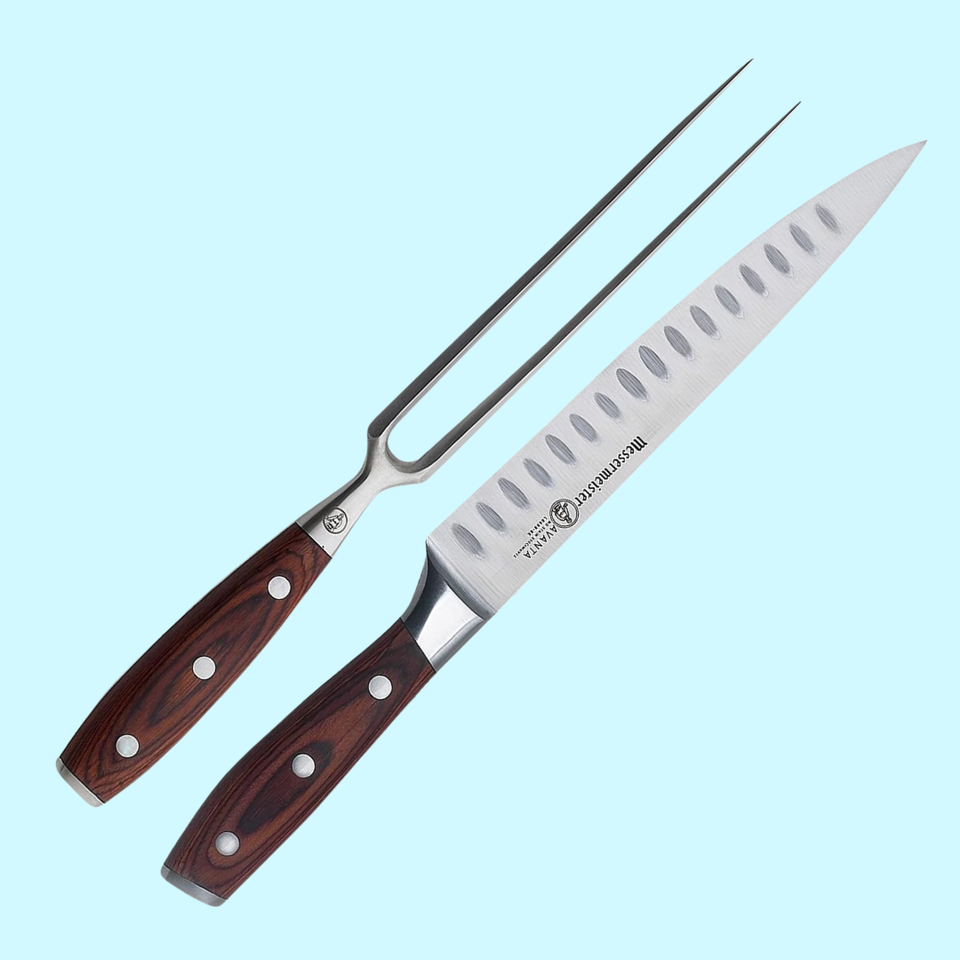
Everything Thanksgiving: Get all our Thanksgiving recipes, how-to’s and more!
Some people eat Thanksgiving dinner in the early afternoon, while others argue that it’s better to eat it much later in the evening. Either way, we typically overeat and leave the table feeling bloated and lethargic. So is there a best time of day to start the feast?
We chatted with two gastrointestinal experts to find out the best time to eat a big meal like Thanksgiving. Here’s what you need to know.
Eating earlier is ideal.
While she doesn’t promote having a large meal at any time, Marie-Pierre St-Onge, associate professor of nutritional medicine at Columbia University and center director for the American Heart Association-funded Go Red for Women Strategically Focused Research Center, acknowledges that Thanksgiving is a day when people tend to overindulge and that there are ways to balance that. She told HuffPost that it’s preferable to eat the bulk of your calories earlier in the day for several reasons.
“It’s easier to adjust throughout the rest of the day if you’ve overeaten at an earlier meal,” St-Onge said. “Also, having large meals closer to bedtime is less than ideal because then you’re full and you have undigested foods in your gastrointestinal system that can potentially lead to some gastric reflux in individuals who are prone to that.”
She explained that food tends to accumulate and potentially cause reflux if you lie down right after a large meal.
A YouGov poll of 1,000 Americans found that the highest percentage of Americans eat Thanksgiving dinner between 4 and 5 p.m.
To avoid this issue, St-Onge recommends leaving a couple of hours at the end of the day for your body to digest everything before going to bed. About 2-3 hours should be sufficient, but how long it takes for food to travel down your gastrointestinal tract depends on a number of factors.
These include “the person’s individual gastric motility, the amount of fiber in the food, the amount of liquids that are consumed at the same time, [and] the nutrient compositions of food. ... If it’s a larger meal, obviously you want to give yourself more time,” St-Onge said.
Moderation is key.
Kelley Bradshaw, manager of the Nutrition and Wellness Service at Brigham and Women’s Hospital, agrees that eating a big meal like Thanksgiving earlier in the day is ideal, but points out that “ultimately, what really matters as far as not having that discomfort [post-meal] is what you eat and the amount of what you eat.”
“If you had a giant Thanksgiving meal that was three servings of everything at [lunchtime], you’re probably going to be feeling pretty uncomfortable, whereas if you ate at 5 or 6 [p.m.] but just had one serving of everything and balanced everything out, you might feel OK just because it’s the quantity of things,” Bradshaw told HuffPost.
Don’t skip breakfast.
While it may seem like a good idea to skip breakfast on Thanksgiving Day (more room for turkey and pumpkin pie, right?), it can actually do more harm than good.
“What can happen when we have these big eating events coming up is that people tend to want to skip meals earlier in the day to ‘save’ all their calories for this meal,” Bradshaw said, “but that can cause some indigestion because your stomach is still producing stomach acid [even if] you don’t have any food for it to break down.”
This can lead to feelings of indigestion once you do eat. Bradshaw added that skipping meals can cause blood sugar to drop and lead to overeating.
For breakfast, aim for a balanced meal with lean protein and fiber-filled carbohydrates that are slower to digest to keep your energy and blood sugar at a good level — think eggs, low-sugar Greek yogurt or a protein shake, plus whole-grain bread or whole fruit (rather than juice). “These kinds of things are going to give you that energy in the morning so that when you go to eat your Thanksgiving midday meal, you’re not going to be ravenous,” Bradshaw said.
To that end, a small snack between breakfast and the main meal (like a piece of fruit or quarter cup of nuts) can prevent you from overeating.
Incorporate some movement and exercise into your day.
As usual, balance is the name of the game. With a large meal like Thanksgiving, it’s a good idea to do some physical activity to compensate for the additional calories you’ll consume. St-Onge recommends doing more strenuous activities or workouts before the meal and breaking up the festivities with some neighborhood walks.
In addition to burning calories, going on walks aids with digestion and offers a break from the table, which can be helpful in decreasing the amount of mindless eating that happens on Thanksgiving Day, and in general.
At the end of the day, Thanksgiving is just one meal, and it’s OK to indulge without any sort of guilt or other negative emotions. Bradshaw tries to remind clients who worry they can’t enjoy their favorite foods on Thanksgiving that it’s just one meal. “We don’t have to have that same, exact, giant meal four servings or four days in a row,” Bradshaw said.
She works with people on hunger cues with a scale that ranges from 1 (ravenous) to 10 (stuffed). “We don’t want to hover on those extremes,” Bradshaw said. “We want to hover at a 3-8 where you’re hungry and then you get full but you’re not stuffing yourself, and that can be a good internal guide on a day like Thanksgiving; I want to feel full, but not so full that I can’t walk and I feel discomfort.”
The HuffPost/YouGov poll consisted of 1,000 completed interviews conducted Nov. 14-16 among U.S. adults, using a sample selected from YouGov’s opt-in online panel to match the demographics and other characteristics of the adult U.S. population.
HuffPost has teamed up with YouGov to conduct daily opinion polls. You can learn more about this project and take part in YouGov’s nationally representative opinion polling. More details on the polls’ methodology are available here.
Most surveys report a margin of error that represents some but not all potential survey errors. YouGov’s reports include a model-based margin of error, which rests on a specific set of statistical assumptions about the selected sample rather than the standard methodology for random probability sampling. If these assumptions are wrong, the model-based margin of error may also be inaccurate. Click here for a more detailed explanation of the model-based margin of error.

